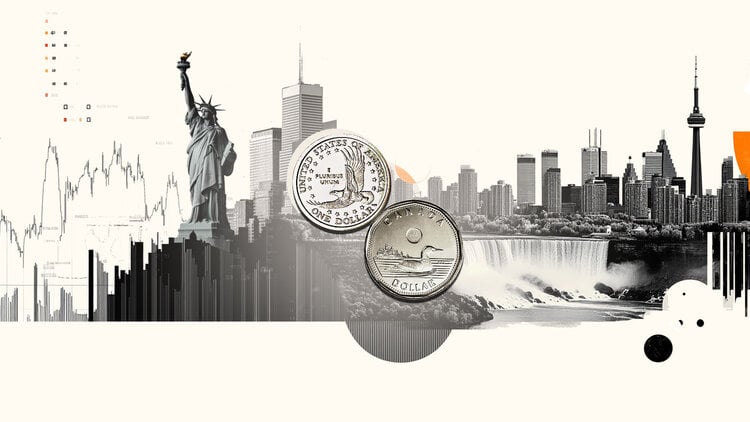- The Dollar is preparing for a new week of gains.
- On Friday there will be no publication of data of interest, so lukewarm movements are expected in the markets.
- The DXY Dollar Index fails again in its attempt to maintain the 105.00 level, and could begin to top out.
The US Dollar (USD) has had a strong week after a series of US economic data appears to convince traders of the strength of the US economy. The Dollar’s trend appears to be sideways to bullish against most major pairs. The US economy is doing well and heading for a soft landing, while economic activity in the Eurozone and Central Europe is increasingly showing signs of difficulty.
No data of interest to the markets will be published on Friday. Baker Hughes’ release of the US drilling rig count, due at the end of the day, could carry more weight than usual following the collapse of negotiations in Australia, which will likely lead to the withdrawal of almost 10% of the Natural Gas supply in the coming weeks.
Market drivers: The dollar seems happy where it is
- The main data for this Friday are wholesale inventories, which will be published at 14:00 GMT. Expectations are for inventories to decline a marginal 0.1% in July, the same decline recorded in June.
- Baker Hughes’ US rig count at 17:00 GMT will receive some more attention as markets look for clues as to whether the US can stock up on oil and natural gas now that 10% of global supply will be withdrawn from markets due to strikes by Australian LNG workers.
- Stocks in Asia will close this week in the negative, with the last day of trading also recording losses: The Japanese Index is down 1%. European stocks are rather flat, although they are also trading below zero.
- The CME Group’s FedWatch tool shows that markets are pricing in a 93% chance that the Federal Reserve will keep interest rates unchanged at its September meeting.
- The 10-year US Treasury yield is trading at 4.23% and is off the high from earlier this week. Markets have been able to digest a substantial amount of debt issuance, which was one of the elements driving yields higher.
DXY Dollar Index Technical Analysis: Soft Landing
The dollar is back in favor with the markets, weighing down the stock and bond markets with bond prices and stock indices falling below several important support levels. The dollar extends its summer recovery and could remain at stronger levels through the fall and winter if other central banks begin to cut their reference interest rates. If the Dollar remains stable, currency depreciation will cause the DXY Dollar Index to rise substantially and we could see more Dollar strength in the future.
All eyes are on the 105.00 level after the DXY index briefly broke the level on Wednesday and Thursday. The DXY index is just a few cents away from hitting a new six-month high. The next levels are at 105.88, the March high, which would be a new yearly high. If the DXY index reaches this latter level, some resistance could appear.
To the downside, the 104.30 level is vital to keep the DXY Dollar Index at these elevated levels. A little further down, the 200-day SMA at 103.04 comes into play, which could lead to further weakness once the DXY index starts trading below it. The double support at 102.68, with the 100-day and 55-day SMA, are the last lines of defense before the US Dollar experiences substantial and longer-term depreciation.
Frequently Asked Questions about the US Dollar
What is the US dollar?
The United States Dollar (USD) is the official currency of the United States of America, and the “de facto” currency of a significant number of other countries where it is in circulation alongside local banknotes. According to 2022 data, it is the most traded currency in the world, with more than 88% of all global foreign exchange operations, which is equivalent to an average of 6.6 trillion dollars in daily transactions.
After World War II, the USD took over from the British Pound as the world’s reserve currency. For most of its history, the US dollar was backed by gold, until the Bretton Woods Agreement of 1971, when the gold standard disappeared.
How do the decisions of the Federal Reserve affect the dollar?
The single most important factor influencing the value of the US dollar is monetary policy, which is determined by the Federal Reserve (Fed). The Fed has two mandates: achieve price stability (control inflation) and promote full employment. Its main tool to achieve these two objectives is to adjust interest rates.
When prices rise too fast and inflation exceeds the 2% target set by the Fed, the Fed raises rates, which favors the dollar’s value. When inflation falls below 2% or the unemployment rate is too high, the Fed can lower interest rates, which weighs on the dollar.
What is Quantitative Easing and how does it influence the Dollar?
In extreme situations, the Federal Reserve may also print more dollars and enact quantitative easing (QE). QE is the process by which the Fed substantially increases the flow of credit in a stuck financial system.
This is an unconventional policy measure that is used when credit has dried up because banks do not lend to each other (for fear of counterparty default). It is the last resort when a simple lowering of interest rates is unlikely to achieve the necessary result. It was the weapon of choice for the Fed to combat the credit crunch that occurred during the Great Financial Crisis of 2008. It consists of the Fed printing more dollars and using them to buy US government bonds, mainly from financial institutions. QE usually leads to a weakening of the US dollar.
What is Quantitative Tightening and how does it influence the US Dollar?
Quantitative tightening (QT) is the reverse process whereby the Federal Reserve stops buying bonds from financial institutions and does not reinvest the principal of maturing holdings in new purchases. It is usually positive for the US dollar.
Source: Fx Street
I am Joshua Winder, a senior-level journalist and editor at World Stock Market. I specialize in covering news related to the stock market and economic trends. With more than 8 years of experience in this field, I have become an expert in financial reporting.







